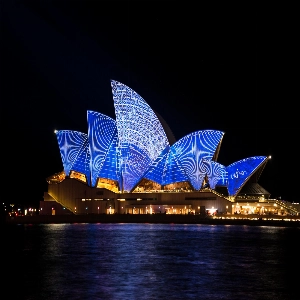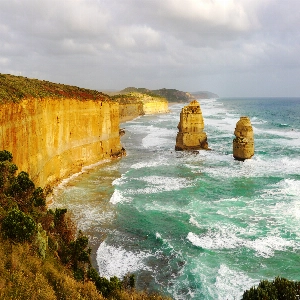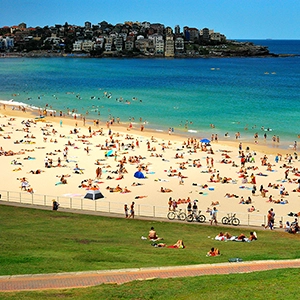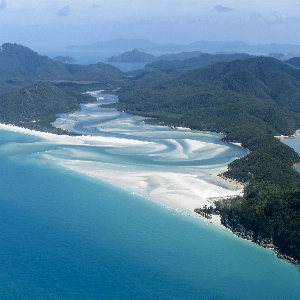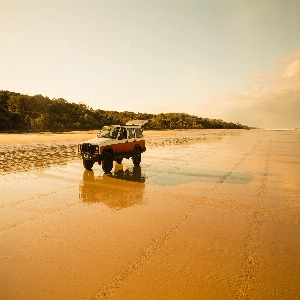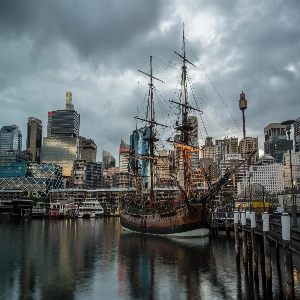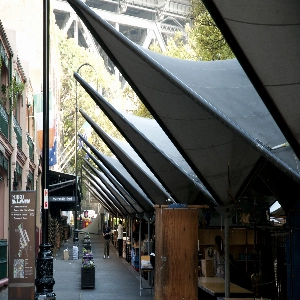Great Barrier Reef

Introduction to the Great Barrier Reef
Stretching over 2,300 kilometers (1,430 miles) along the northeast coast of Australia, the Great Barrier Reef is the world's largest coral reef system and the planet's most extensive living organism. Comprising nearly 3,000 individual reefs and approximately 900 islands, this extraordinary aquatic ecosystem is home to an immense array of marine plant and animal species, making it one of the Earth's most diverse and complex habitats. From the coral polyps that construct the reef's massive structure, to the countless fish, mollusks, sea turtles, and other creatures that live within it, the Great Barrier Reef's exceptional biological richness and unique ecological processes have earned it recognition as a UNESCO World Heritage Site and one of the Seven Natural Wonders of the World.
The Formation of the Great Barrier Reef
The Great Barrier Reef began forming approximately 20,000 years ago as a result of geological events and natural processes that have continued shaping the reef ever since. For thousands of years, the growth and development of coral have played a vital role in forming the reef's complex structure. Coral reefs can only grow under specific environmental conditions, typically in warm, shallow waters that supply the reef inhabitants with essential nutrients and sunlight. The Great Barrier Reef's ideal location within the Coral Sea – a marine area bordered by the Australian continental shelf – has facilitated the expansion and evolution of this remarkable underwater world.
At its foundation, the Great Barrier Reef consists of the skeletal remains of countless coral polyps, the tiny, soft-bodied sea creatures responsible for building the reef's structure. Over time, these coral polyps secrete calcium carbonate, creating a hard, limestone skeleton that serves as a protective exoskeleton for the living coral. As the coral organisms die, the remains of their skeletons are gradually layered upon one another, constructing the coral reef's massive structure. Coral reefs such as the Great Barrier Reef also grow by accumulating other materials, including the remains of other marine organisms, seafloor sediments, and biologically derived components like calcareous algae.
Ecological Importance of the Great Barrier Reef
The Great Barrier Reef is one of the most ecologically significant habitats in the world, supporting a diverse array of marine life that coexists within this intricate web of coral, fish, and other organisms. Within the reef complex, there are at least 400 species of coral, representing both hard and soft forms that provide shelter, food, and breeding grounds for a multitude of marine creatures. The reef system also supports over 1,500 species of fish, including colorful reef fish, pelagic fish, sharks, and rays.
In addition to its coral and fish populations, the Great Barrier Reef is home to a variety of other marine organisms, many of which have critical ecological roles as primary producers and decomposers. For example, some species of marine algae, known as "reef-builders," contribute to the reef structure by cementing coral fragments and sand particles together. A variety of invertebrates, including mollusks, crustaceans, and echinoderms, are essential for cycling nutrients within the reef system, breaking down organic matter, and maintaining the health of the coral that supports the entire system.
Biodiversity and Endangered Species
The remarkable diversity of life within the Great Barrier Reef is one of the primary reasons for its global significance as a natural wonder and conservation priority. The reef system supports a wealth of species that are not only vital to the health of the ecosystem but also hold intrinsic value for scientific research, tourism, and cultural heritage. In addition, the Great Barrier Reef is home to several endangered and vulnerable species, including six species of sea turtles, such as the Green Turtle and the Hawksbill Turtle, and numerous species of sharks and rays.
The reef system also provides essential breeding, nesting, and feeding habitats for seabirds, including at least 22 species that depend on the reef's islands and cays for nesting and roosting. This includes species such as the Red-tailed Tropicbird, the Sooty Tern, and the Brown Booby. The diversity of marine mammals within the Great Barrier Reef is similarly impressive, with over 30 species of whales, dolphins, and porpoises known to inhabit or migrate through the region.
Threats to the Great Barrier Reef
The Great Barrier Reef faces numerous threats, including the effects of climate change, pollution, coastal development, invasive species, and overfishing. Of these, climate change is the most significant and pervasive threat affecting the long-term survival of the reef, particularly as rising ocean temperatures cause episodes of coral bleaching – a phenomenon that occurs when coral expel the symbiotic algae that provide them with vital nutrients, often leading to the eventual death of the coral itself. In recent years, severe mass bleaching events have resulted in significant coral mortality within the Great Barrier Reef and heightened concerns about the future of this iconic ecosystem.
In addition to the direct impacts of climate change on coral health, increasing levels of atmospheric carbon dioxide are causing ocean acidification, which reduces the availability of the calcium carbonate that corals need to build their skeletons, thereby limiting their ability to recover from bleaching and other disturbances. Other threats such as pollution from agricultural runoff, coastal development, and unsustainable fishing practices further compromise the resilience of the Great Barrier Reef, making it increasingly vulnerable to the adverse effects of a changing global climate.
Conservation Efforts
Recognizing the immense value of the Great Barrier Reef, both as an economic asset and as a vital component of global biodiversity, the Australian government and numerous organizations have been working towards its protection and conservation. A key aspect of these efforts is the Great Barrier Reef Marine Park, the world's largest marine protected area, which was established in 1975 and covers an area of more than 344,000 square kilometers (133,000 square miles). Through a combination of strict zoning regulations, fisheries management, and ongoing monitoring and research, the Marine Park aims to protect and preserve the Great Barrier Reef's unique ecosystem while promoting sustainable use of its resources by industries such as tourism and fishing.
The future of the Great Barrier Reef depends on the success of these conservation initiatives and the global commitment to addressing the drivers of climate change. As one of the world's most extraordinary natural wonders and an irreplaceable treasure for future generations, the ongoing protection of the Great Barrier Reef is a responsibility shared by all who benefit from and appreciate its astounding beauty and ecological importance.

